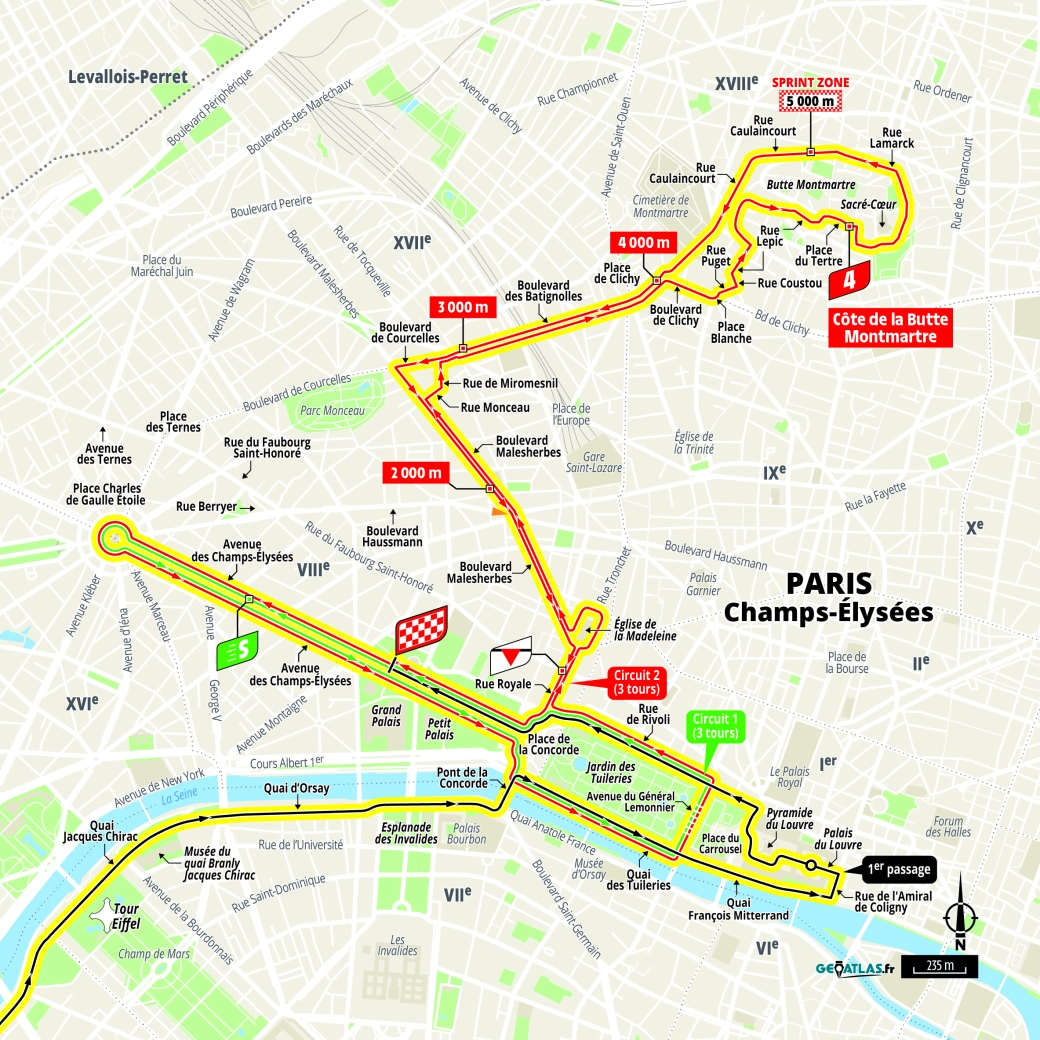The Tour modifies its classic ending and will have a historic final stage
It had been rumored since the beginning of the year that the organization of the Tour de France wanted a new final stage in Paris that would emulate the spectacular route that saw Remco Evenepoel win at the Olympics held last summer in the French capital. Today, ASO, the organizing company of the Grande Boucle, confirms that cyclists will climb Montmartre before heading to the Champs-Élysées.

From Montmartre to the Champs-Élysées, this will be the spectacular final stage of the Tour de France 2025
For years, it has been criticized that the final stage of the Tour de France on the Champs-Élysées was merely a tribute to the winner. A stage with photos, various postures, and in which the competition only took place when reaching the final circuit of the famous Parisian avenue for a conclusion that most of the time ended in a massive sprint with little sporting incentives.

RECOMENDADO

The best apps for cycling and mountain biking

Why wider tires in gravel are faster

Black Friday 2025 cycling bargains: save on Garmin, POC, Maxxis and more

Black Friday Garmin 2025: the ultimate guide to choosing your GPS at the best price

Do you need suspension on your gravel bike?

Countersteering, braking and cornering: the basics to improve your cornering skills
However, that is going to change in 2025 with the confirmation of the route for the final stage of the Tour de France, in which ASO, with the support of the Mayor of Paris, the President of the Republic, and the Minister of Sports, will take the cyclists through much of what was the circuit of the Paris Olympics.
A change in the route that comes after the absence of the French capital from the Tour de France last year precisely because of the Olympic event, which forced the organization to move the finish to Nice. Now, the race returns to its traditional conclusion precisely in the year that marks the 50th anniversary since the Grande Boucle changed its historic finish at the Parc des Princes velodrome for the Champs-Élysées.

The route announced by ASO for stage 21 of the Tour de France 2025 will be 132 kilometers starting in Mantes La Ville, a small town on the outskirts of Paris. Upon arrival in the city, there will be four laps around the traditional circuit of the Champs-Élysées, the first of which includes a small extension that takes the peloton through the Louvre museum esplanade before extending the route of the laps so that Montmartre hill will be climbed to the Sacre Coeur esplanade before rejoining the usual circuit after descending this slope and entering the famous Parisian avenue. An extended circuit with three laps that implies crowning Montmartre for the last time just over 5 kilometers from the finish line.
After what was seen at the Olympics, this almost rules out pure sprinters in the fight for victory and opens the door to more classic-style cyclists and, why not, it could even offer us a final battle between the leaders of the general classification.

This change in the route represents a significant effort for the city of Paris in organizing traffic flows and the inconvenience it will cause to its residents. However, Paris has long been committed to cycling, as evidenced by the recent distinction received as a Cycling City of the Tour de France or its commitment to urban bicycle travel.